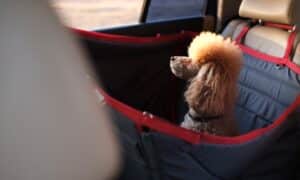Puppies are like children in many ways. They need constant care, supervision, and a lot of affection. Having both together, your kids and your dog, especially during playtime, require extra supervision and patience. The key is to teach your child how to play with the puppy and for the puppy to understand that he needs to listen to the child the same way he listens to you and the other adults in the family.Always Use The Same Commands: It is important for your child to use the same commands that you and the rest of the family use. Doing so teaches your child to use the commands with respect toward the dog. At the same time, your puppy will realize that he needs to obey the child’s commands, thus teaches both to respect one another.
It sounds like it can be quite a handful, but it is also a lot of fun. Combining training and playtime helps to create a closer bond between your child and puppy. Let them run together and then see how fast your child can command the puppy to stop and sit. The puppy needs to learn to sit and wait while your child to throw a toy for your puppy to retrieve. Your child can also train the dog how to roll over by rolling in the grass while having the puppy mimic him.
There are many other ways you can incorporate training and fun between your child and puppy. Below are some helpful rules to keep in mind:
1. Your dog should understand who the leader is. If he has an instinct to herd, don’t let him herd your child. Doing so will make the dog think that he is in charge and will not obey your child’s commands.
2. No roughhousing whatsoever. Discourage aggressive play at all times. Do not let your child drag, pull, wrestle, hit, or poke the puppy, even in a playful way. Your puppy may react differently and may jump and bite. At the same time, do not let your puppy jump on your child. A four year old German Shepherd can easily knock down a 6 year old child.
3. Teach your child to respect the puppy, and vice versa. Your child should learn how to properly treat the dog, which will then earn him the respect and leadership from your puppy.
4. Establish consistency. Puppies learn through repetition. Your child needs to understand that commands that we teach him are firm and absolute. If the puppy doesn’t obey the command, the child should repeat the command until the puppy does what he is told to do.
5. No squeezing. Hugging the puppy too tight can result in injury.
6. Always be there to supervise playtime, especially if you have a young child and/or you have a new puppy. This way, you can easily intervene if things get out of hand.





